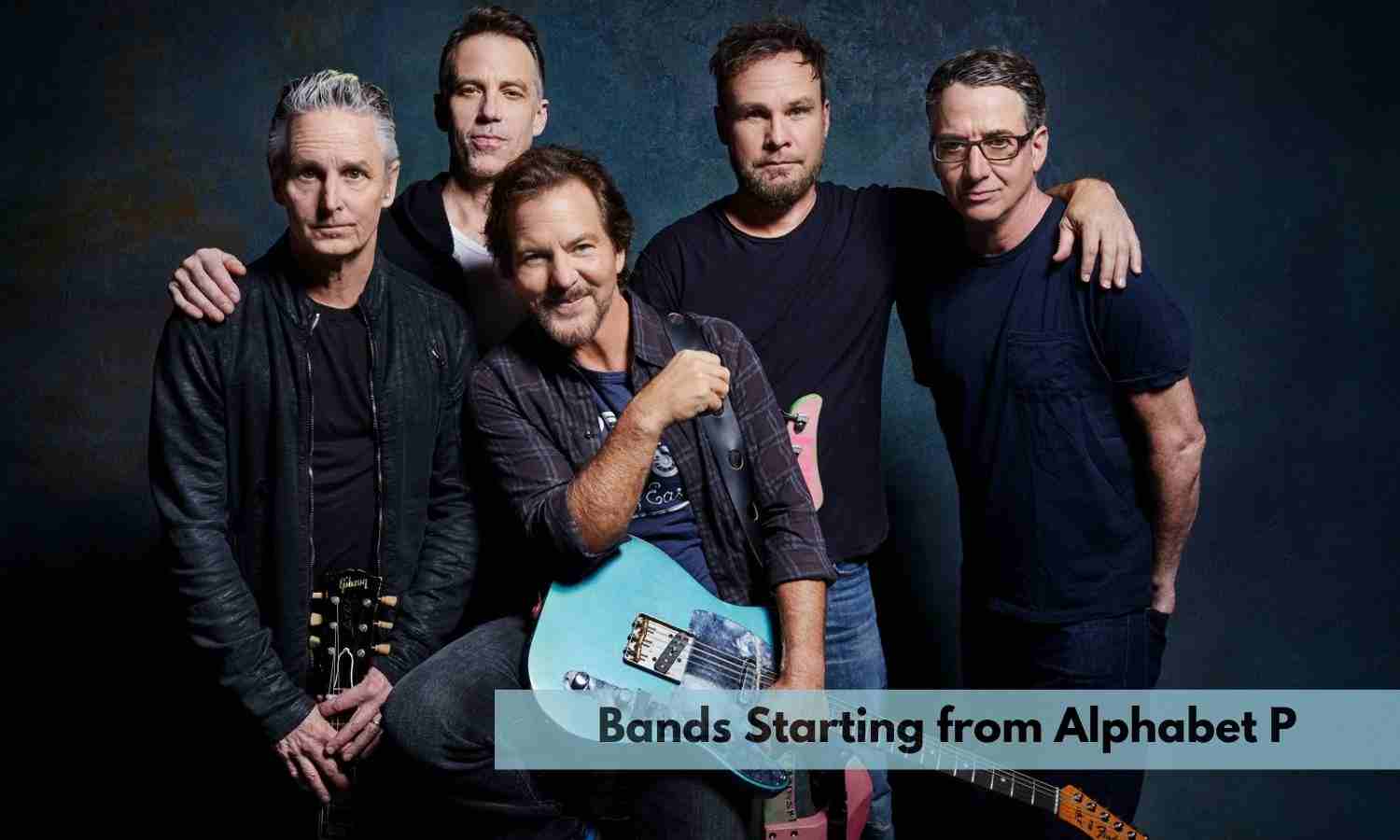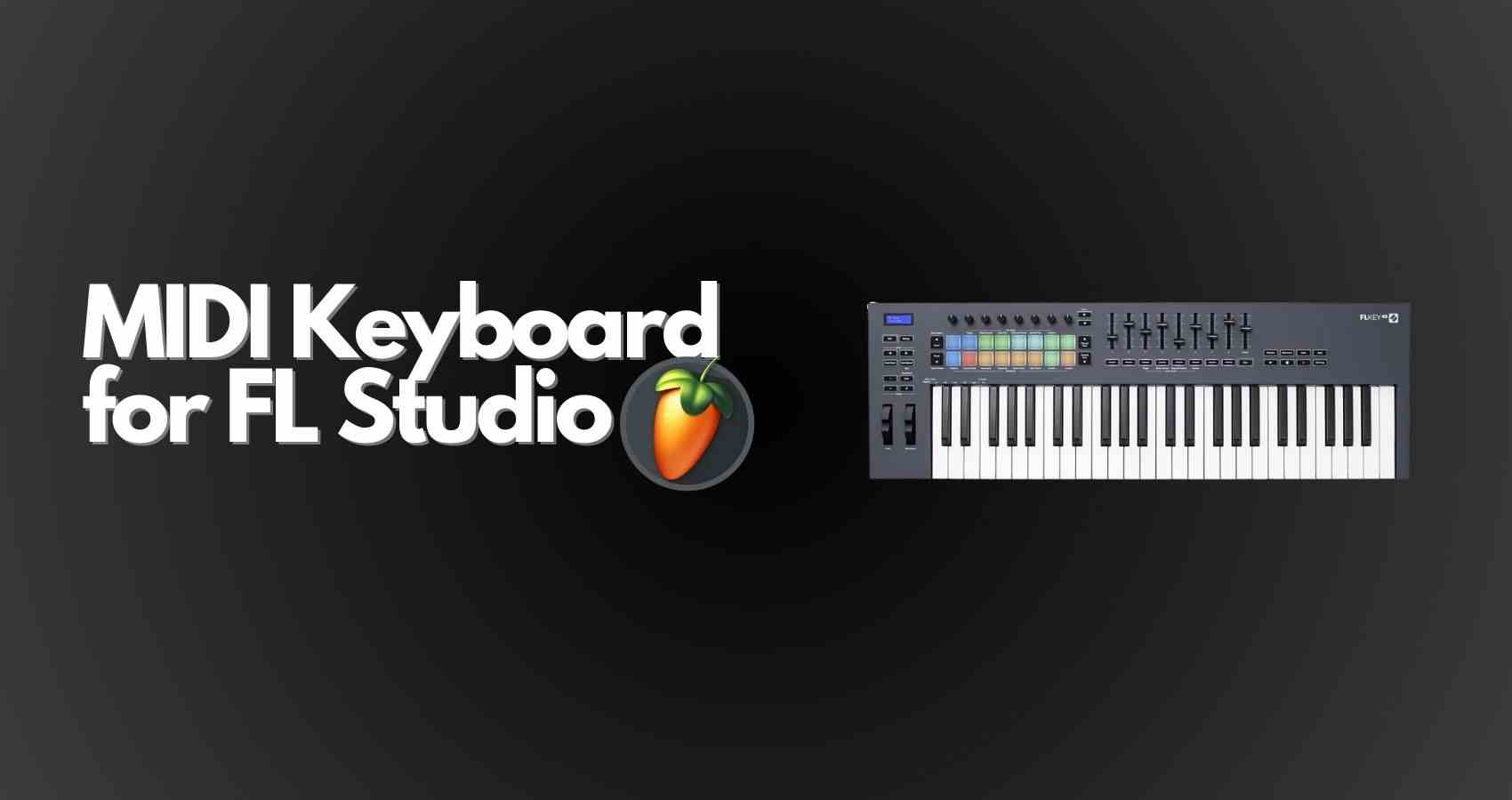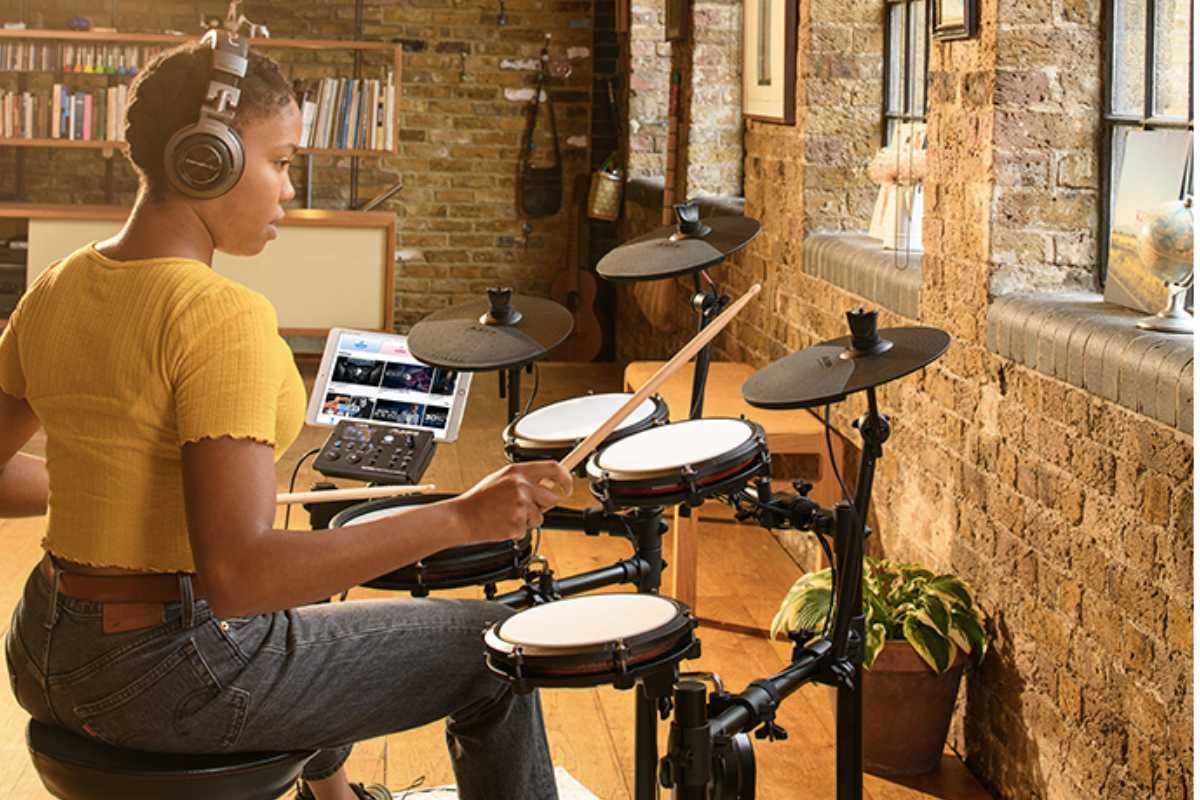From the crushing groove metal of Pantera to the soaring progressive epics of Porcupine Tree, the letter “P” has given us some of the most innovative and influential bands in rock history.
This article explores the stories, sounds, and impacts of 10 trailblazing “P” bands that have left an indelible mark on the musical landscape over the past 30+ years.
Get ready for a whirlwind tour from the gritty mosh pits of the 90s to the psychedelic jam band scene to the gothic drama of synth-rockers Placebo and beyond. Each of these artists pioneered a unique style that would shape the evolution of rock in their era.
| Band Name | Genre | Key Members | Notable Albums | Unique Elements |
|---|---|---|---|---|
| Pantera | Groove metal | Phil Anselmo, Dimebag Darrell | Vulgar Display of Power, Far Beyond Driven | Downtuned guitars, guttural vocals, pummeling riffs |
| Pearl Jam | Grunge | Eddie Vedder, Mike McCready | Ten, Vs., Vitalogy | Vedder’s raw vocals, McCready’s bluesy guitar, punk/classic rock mix |
| Paramore | Pop punk, emo | Hayley Williams | Riot!, Brand New Eyes, After Laughter | Williams’ iconic vocals and persona, catchy hooks, candid lyrics |
| Panic! At The Disco | Baroque pop, dance-punk | Brendon Urie | A Fever You Can’t Sweat Out, Death of a Bachelor | Urie’s vocal range, theatrical live shows, genre experimentation |
| Pixies | Alternative rock | Black Francis, Kim Deal | Surfer Rosa, Doolittle | Quiet/loud dynamics, surf-rock guitar, surreal lyrics |
| Phish | Jam band, progressive rock | Trey Anastasio | Junta, Billy Breathes | Extended improvisational jams, diverse genre influences, dedicated fanbase |
| Portishead | Trip-hop | Beth Gibbons, Adrian Utley | Dummy, Portishead | Cinematic atmosphere, Gibbons’ jazz-tinged vocals, vinyl samples and scratches |
| Primus | Funk metal, experimental rock | Les Claypool | Sailing the Seas of Cheese, Pork Soda | Claypool’s slap bass technique and quirky vocals, surreal humor |
| Porcupine Tree | Progressive rock, metal | Steven Wilson | In Absentia, Fear of a Blank Planet | Complex compositions, conceptual themes, blending of styles |
| Placebo | Alternative rock, glam | Brian Molko | Placebo, Without You I’m Nothing | Molko’s androgynous vocals and persona, goth-tinged sound, raw lyrics |
[recommended_posts posts=”1763,1766,1897,1849,1877,1893″]
10 Best Bands That Start With P
Here we have mentioned the best bands that start with P:
1. Pantera

Pantera started in the 1980s as a glam metal band, heavily influenced by bands like ‘Van Halen’ and ‘Kiss’. Their early albums like Metal Magic and Projects in the Jungle featured a classic 80s metal sound with soaring vocals from Terry Glaze, dual guitar harmonies, and anthemic songwriting.
However, in the early 90s, Pantera underwent a radical transformation in their sound, shedding their glam metal skin to pioneer a new style called groove metal.
This new sound was characterized by downtuned guitars, thunderous bass, and Phil Anselmo’s guttural vocals. Albums like ‘Vulgar Display of Power’ and ‘Far Beyond Driven’ featured intensely aggressive tracks with pummeling riffs that still retained a sense of groove. Dimebag Darrell and Rex Brown gave the band its signature bottom-heavy stomp.
- Key elements of Pantera’s groove metal sound included downtuned guitars, guttural vocals, pummeling riffs, and an overall heavier sound compared to their previous glam metal style.
Pantera’s lyrics also grew darker and angrier, with recurring themes of violence, aggression, standing up against mainstream society, and not conforming. Songs like “Fucking Hostile,” “This Love,” “I’m Broken,” and “Walk” exemplified Pantera’s uncompromising and confrontational lyrical style.
As for their live performances, Pantera exploded onstage with uncontrolled, chaotic energy. Singer Phil Anselmo would often scream directly into the faces of audience members in the front row.
Dimebag Darrell’s blistering guitar solos incorporated elements of blues and country, while his wild onstage antics cemented his status as a guitar hero. This legendary live show helped cement Pantera’s rabid cult following in the metal community.
2. Pearl Jam
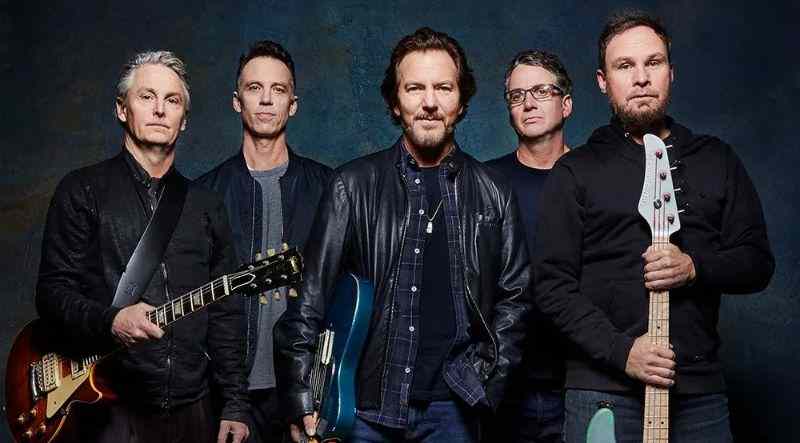
When Pearl Jam burst onto the music scene in 1991 with their debut album Ten, they helped popularize the grunge movement brewing out of Seattle. Their sound brought together elements of punk, classic rock, and metal with a distinctive grunge flavor often characterized by Eddie Vedder’s soulful, Jim Morrison-esque baritone vocals.
Guitarist Mike McCready’s epic, blues-influenced guitar solos also became a calling card of the band’s sound.
Key elements of Pearl Jam’s sound included:
- Eddie Vedder’s raw, emotional vocals
- Mike McCready’s bluesy guitar style
- A mix of punk aggression and classic rock songwriting
Many of Pearl Jam’s lyrics tackled heavier sociopolitical subject matter with a certain earnestness. Songs like “Alive,” “Even Flow,” and “Jeremy” dealt with themes like mental illness, homelessness, trauma, and school shootings.
Their activism outside of music also resonated with fans, like their legendary feud with Ticketmaster over high service charges during their 1994 tour. Pearl Jam quickly became an icon of the Generation X counterculture.
The band enjoyed enormous commercial success, with Ten becoming one of the highest-selling albums of the 1990s, along with others like Vs. and Vitalogy. Epic ballad “Black” and radio hits like “Daughter” and “Better Man” helped make Pearl Jam global superstars.
They continued making hit records throughout the decade while maintaining their ethics. Pearl Jam joined the pantheon of great mainstream rock acts thanks to their authentic grunge sound and socially conscious ethos.
3. Paramore

Paramore burst onto the pop-punk scene in the mid-2000s with their infectious brand of punk-pop and emo rock. Led by frontwoman Hayley Williams, the band captivated listeners with their youthful energy and undeniable melodies on songs like “Misery Business,” “That’s What You Get,” and “Ignorance.” These hits earned the band a passionate following in the Warped Tour scene.
A major part of Paramore’s appeal was Hayley Williams herself—her fiery orange hair and dynamic stage presence made her an instantly iconic figure. Her powerhouse vocals and diary-like lyrics about relationships, identity struggles, and staying true to oneself are connected with legions of fans. Many young listeners saw Hayley as a role model and kindred spirit.
Elements making Paramore stand out include:
- Hayley Williams’ immediately recognizable vocals/persona.
- Candid lyrics about relationships and growing up.
- Massive pop-punk hooks and riffs.
Over their career, Paramore smoothly transitioned to a more pop and arena-ready sound without compromising the essence of their angst-filled roots.
Their self-titled 2013 album achieved major mainstream success, going platinum with over a million sales thanks to catchy hits like “Still Into You” and “Ain’t It Fun.” The latter song won Paramore their first Grammy in 2015.
Even on glossy radio-friendly releases, Hayley Williams retained her raw emotional vulnerability in the songwriting, connecting with listeners on songs addressing self-doubt and overcoming adversity.
After a brief period of the band splintering in 2015 over creative differences, Paramore returned and re-energized with 2017’s After Laughter. The album incorporated sleek, retro 80s synth-pop into their formula while still delivering cathartic lyrics about depression and disillusionment.
Through numerous stylistic phases, lineup changes, and growing pains, Paramore retains their status as an emo-pop superstar. They’ve successfully navigated the tricky landscape of maturing from a Warped Tour band to a bonafide triple-platinum arena act, all without losing sight of authenticity. Their continued evolution shows why Paramore resonates so strongly with millions of fans worldwide.
4. Panic! At The Disco
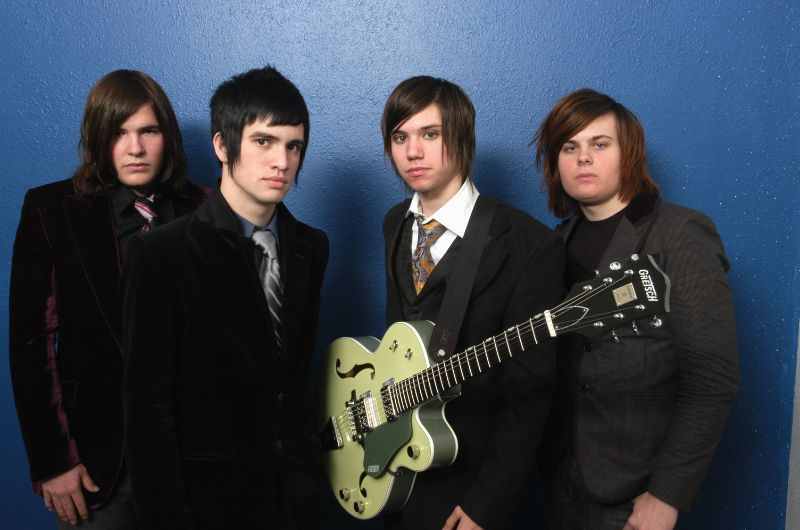
Panic! At The Disco first made waves in 2005 with their eccentric mix of baroque pop, vaudeville, and dance-punk on their debut album A Fever You Can’t Sweat Out. The young band quickly captured attention with the infectious, multi-part pop single “I Write Sins Not Tragedies” and its circus-themed music video.
Panic!’s sound was characterized by the soulful, flamboyant vocals of frontman Brendon Urie, layered production, and a myriad of quirky instrumental flourishes like strings, accordion, and horns.
Onstage, Panic! brought all the lavishness of a Broadway production. Sporting top hats, elegant suits, and the occasional glitter cannon, they moved theatrically while belting out soaring melodies.
Urie’s impressive vocal range lets him transition seamlessly from crooning to falsetto wails. This blend of retro-glam imagery and pop-punk energy earned Panic! a passionate teen following during the MySpace band era.
Panic! embraced experimentation as the years went on, blending rock, funk, and soul on albums like Death of a Bachelor. But through every era, Brendon Urie’s showmanship and vocal acrobatics kept Panic!’s musical ambition soaring to new heights.
5. Pixies
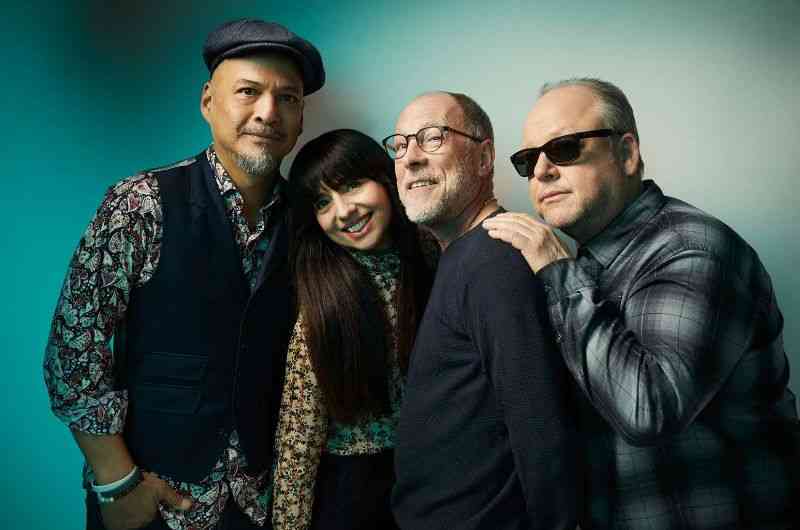
The Pixies were pioneers of the alternative rock movement of the late 1980s and early 1990s. Though not hugely commercially successful at the time, the Pixies’ off-kilter song structures, surf rock-influenced guitar, and quiet-loud dynamic proved deeply influential on countless alternative bands that followed.
Their classic albums like Surfer Rosa and Doolittle showed a masterful command of loud/soft contrasts, shifting time signatures, and frontman Black Francis’ surreal lyrics.
Musical elements that defined the Pixies’ sound:
- Black Francis’ snarling vocals and surreal lyrics
- Joey Santiago’s abrasive, surf-rock guitar riffs
- Their trademark quiet/loud song structure
The Pixies were more focused on textures than technical skills or soloing. Francis’ jerky rhythm guitar locked in with Kim Deal’s propulsive basslines and Joey Santiago’s dissonant guitar leads to create a tense push-and-pull effect.
Thematically, Pixies’ songs covered diverse oddball topics like space travel, Biblical violence, surrealist imagery, and science fiction. Their ability to go from mellow and spaced-out to aggressive and punkish within seconds became a huge influence on the grunge generation to come. The Pixies made eccentricity into an art form.
Though they fractured in the early 90s, the Pixies reunited triumphantly in 2004 for a series of acclaimed tours and albums. Their legacy grew exponentially, cementing their stature as one of the most inventive bands of their era. Kurt Cobain even admitted he “was trying to rip off the Pixies” with Nirvana’s sound.
6. Phish
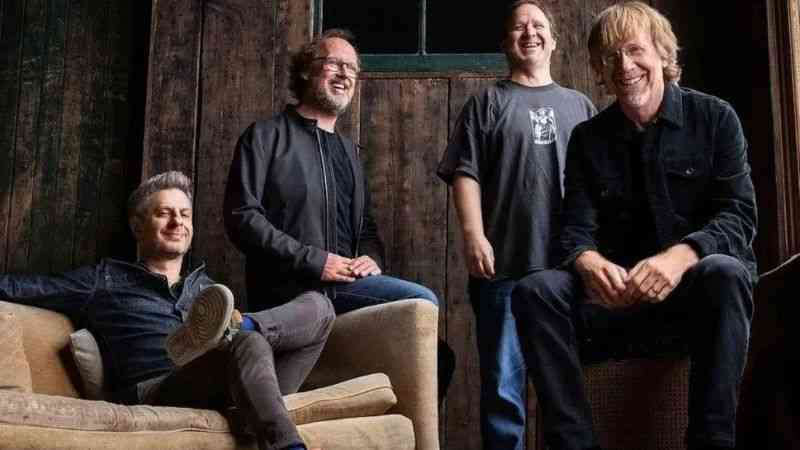
Phish carved an unusual niche for themselves in the 90s jam band scene thanks to their exceptionally skilled musicianship and funky, psychedelic improvisational style.
Epic, exploratory live concerts featuring extended jams on songs like “Tweezer” and “You Enjoy Myself” attracted legions of dedicated fans who followed the band’s tours across the country. Phish encouraged bootleg taping and developed a huge communal fanbase that thrived on their live energy and musical spontaneity.
Stylistically, Phish blended elements of classic rock, jazz fusion, bluegrass, and more into their elastic jam sound. Guitarist Trey Anastasio displayed remarkable fluidity moving between styles, from chicken-pickin’ country to soaring rock solos. The band wasn’t afraid to get weird either, incorporating vacuum cleaner solos, trampoline acrobatics, and synchronized dancing into their already eccentric shows.
Standout albums like Junta, Rift, and Billy Breathes showed Phish’s technical chops as songwriters too, with their densely composed prog songs and odd, humorous lyrics.
But life was where the magic happened. By the late 90s, Phish had become one of the biggest concert draws nationwide thanks solely to word-of-mouth about their incredible improvisational skills onstage.
Even after breaking up in 2004, reunited tours continued selling out arenas more than a decade later based on their reputation as the ultimate jam band.
7. Portishead

Portishead emerged from Bristol, England in the mid-90s pioneering a style dubbed “trip-hop” – a moody, experimental blend of electronic, rock, and hip-hop elements.
Their 1994 debut Dummy stood out starkly from the Britpop and grunge dominating the era with its cinematic soundscapes, haunting atmosphere, and Beth Gibbons’ torch singer-esque vocals. Songs like “Glory Box” and “Sour Times” pulsed with lonely, cabaret-style beauty, accented by eerie scratching and samples from guitarist Adrian Utley.
Defining musical traits of Portishead’s trip-hop sound included:
- Cinematic, atmospheric production
- Beth Gibbons’ emotive, jazz-tinged vocals
- Adrian Utley’s incorporation of vinyl samples and scratches
Portishead’s lyrics conveyed a similar sense of desolation and longing, sung with Beth Gibbons’ chilling vulnerability. Much of Portishead’s distinct production also came from incorporating old analog samples with lonely jazz and film score touches.
Instruments like the Rhodes piano and theremin appeared alongside breakbeats and vocal snippets, creating an otherworldly “spy movie” vibe. This blend of the organic and electronic became Portishead’s signature.
Despite taking over a decade between albums at points, Portishead’s influence still reverberates in bands blending electronics with atmospherics today.
Groups like Massive Attack, Lamb, Goldfrapp, and even Radiohead owe a debt to Portishead’s groundbreaking trip-hop achievements on Dummy and subsequent releases. They remain one of the most unique bands to emerge from the 1990s.
8. Primus
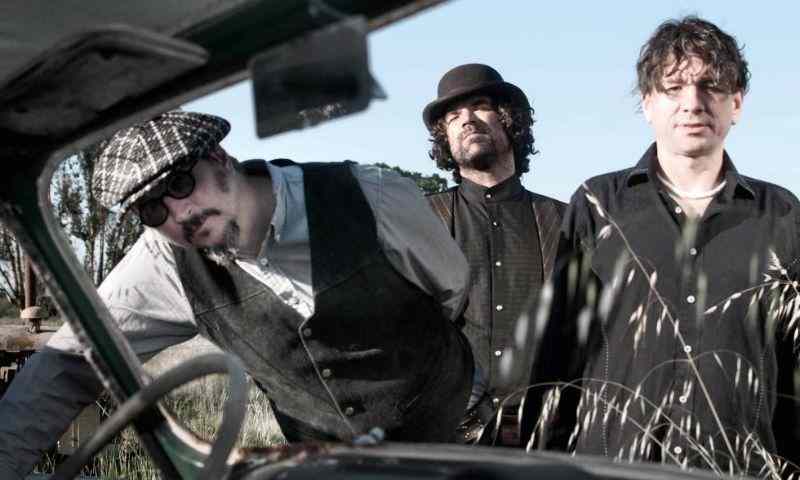
Primus forged an aggressively weird sound in the 1990s that blended funk metal rhythms with a heavy dose of bizarre humor and perversity. Much of their unique style can be credited to bassist/vocalist Les Claypool, whose freakish slap bass technique and quirky vocal delivery made Primus stand out from any other band.
Claypool often played his bass in slippery, syncopated patterns more akin to funk guitar than traditional rock bass. His hyperactive playing was unusual for metal or rock bands of the era.
Lyrically, Les crafted surreal, vividly descriptive tales ranging from cannibalism to demented circus performers that aligned with the band’s oddball spirit. Songs like “Jerry Was A Race Car Driver,” “My Name Is Mud,” and “Mr. Krinkle” displayed their eccentricity.
Primus also incorporated influences from experimental rock and psychedelia, with guitarist Larry LaLonde’s angular riffs interlocking with Claypool’s punchy bass grooves. Eccentric albums like Sailing the Seas of Cheese, Pork Soda, and Tales From the Punchbowl confounded mainstream expectations but attracted an ardent cult following who appreciated their uniqueness.
Primus also garnered attention for their psychedelic live shows featuring props, costumes, and visuals as wild as their music. They remained a one-of-a-kind anomaly throughout the 90s alternative explosion.
Despite a fluctuating lineup, Les Claypool’s twisted creative vision always steered the Primus ship, taking audiences on a demented trip all their own with each album. Their mantra of “Primus sucks!” only furthered the defiantly odd ethos that still endears them to fans today.
9. Porcupine Tree
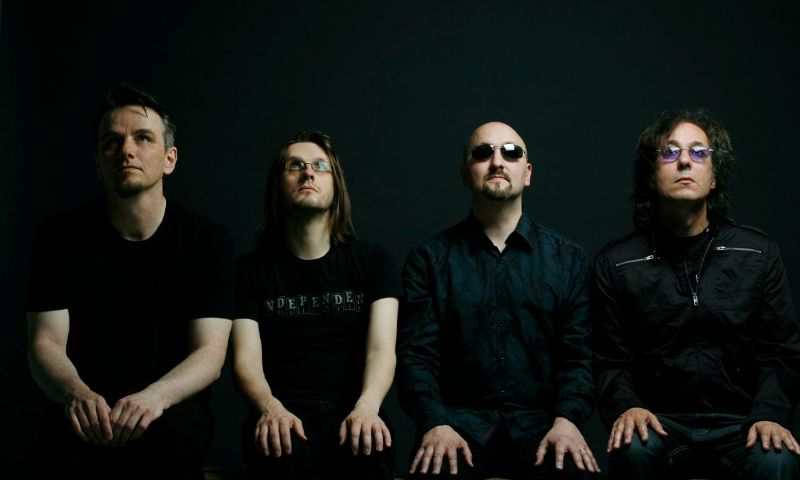
Beginning as a solo project of musician Steven Wilson in the late 80s, Porcupine Tree would gradually evolve into a legendary progressive rock band over the following decades. Their early psychedelic pop-rock sound gave way to complex compositions blending metal, electronic, post-rock, and ambient elements in fluid, ambitious suites.
As Porcupine Tree’s lineup expanded in the late 90s, their music grew more grandiose and conceptual, with Steven Wilson’s production skills also becoming sought-after in the prog world.
As Porcupine Tree evolved, their music incorporated:
- Heavier metal influences
- Intricate, ambitious song structures
- Conceptual themes of psychology
Albums like In Absentia, Deadwing, and Fear of a Blank Planet were hailed as modern classics in the genre by fans and critics alike. Lush synthesizers, chugging guitars, and Gavin Harrison’s intricate percussion wove together seamlessly into epic, operatic tapestries contemplating characters with mental illness.
Porcupine Tree balanced cold technological elements with vulnerable humanity in the lyrics and vocals, exemplified in songs like “Lazarus” and “Anesthetize.”
Porcupine Tree was often praised for continuing the conceptual legacy of 70s prog icons like Pink Floyd, King Crimson, and Rush while also expanding it with darker, heavier sounds.
Though they began in obscurity, Porcupine Tree became one of the most critically acclaimed and forward-thinking bands in contemporary progressive rock before going on hiatus in 2010.
They helped inspire a new wave of progressive metal and art rock, pioneering the integration of hard rock power with experimental atmospherics. Porcupine Tree’s fearless blending of styles and ambitious musical vision made them, as Rolling Stone said, “able to construct songs that made the grandiloquent sound intimate, and the intimate sound grand.”
10. Placebo
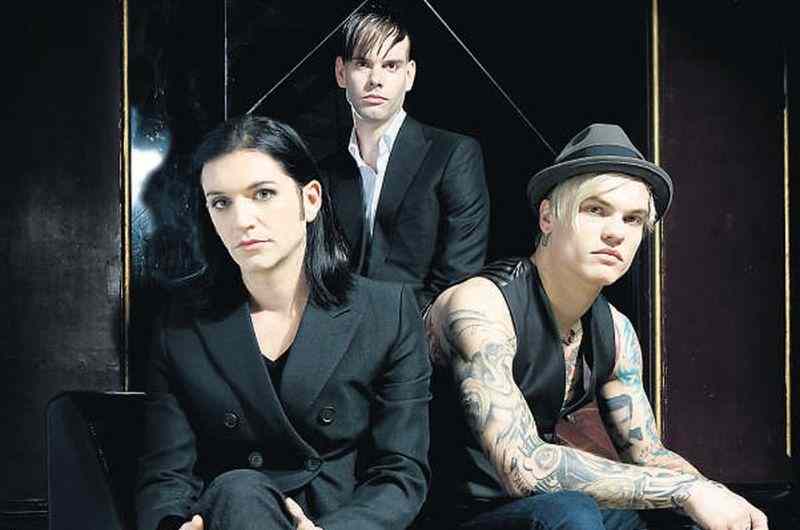
Placebo warped together glam, punk, and alternative rock into a sleek goth-tinged sound in the mid-90s. Singer Brian Molko’s androgynous vocals and gender-bending appearance made them stand out from the Britpop pack.
Placebo captured teenage angst and dysfunction with style and substance. Songs like “Pure Morning” and “Every You Every Me” blended sullen melodrama with huge pop hooks and guitar crunch.
Lyrically, Placebo dissected topics like drug addiction, fame, gender identity, sexuality, and more with wit, sensitivity, and emotional rawness. Brian Molko’s nasal tenor contained multitudes – from smug irony to vulnerable sincerity – while also remaining ambiguous about his sexuality. This blurring of modes and meanings became integral to Placebo’s outsider appeal.
From their punky 1996 debut through 2009’s more polished Battle for the Sun, Placebo toyed with sounds including electronic rock, glam, gothic rock, and straight-up pop while retaining their core style anchored around Molko’s distinct vocals and observations.
They continue today as cult icons, with many modern bands like My Chemical Romance, Muse, and Deftones citing them as influences for their dangerous romanticism. Their place in 90s alternative rock history is assured.
Band Name that starts with P: Wrap Up
In closing, few letters can boast musical acts’ sheer diversity and creativity starting with “P” – from Pantera’s pummeling groove to Portishead’s atmospheric trip-hop to everything in between. Each of these 10 artists contributed their distinct flavors to the melting pot of rock, expanding our perceptions of what the genre can encompass.
Their influence continues to echo anytime fuzzy guitars, funky bass lines, and powerful vocals come together in new ways. So the next time you rock out to one of your favorites on this list, take a moment to appreciate their vision and impact. Thanks to them, the letter “P” will forever be associated with progress, innovation, and the unbridled spirit of rock and roll!

